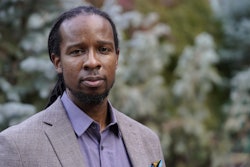The Envy of Its Peers?
From the bachelor’s to the doctorate, Georgia Tech has figured out how to be a top producer of Black engineers. But just how do they do it?
By Frank L. Matthews
ATLANTA
The Georgia Institute of Technology: 117. North Carolina A&T State University: 145. These numbers do not represent the outcome of a high-scoring basketball game, but rather it’s the number of bachelor’s degrees awarded to Black engineers at each school in the 2004-2005 academic year, according to Diverse’s Top 100 bachelor’s degree producers special report.
In addition, Georgia Tech is first in granting engineering master’s degrees to African-Americans, and is tied for third in producing Black engineering doctorates, along with Vanderbilt University, the University of Florida and George Mason University. Tech’s impressive record of producing minority engineers is now entering its third decade.
The university has 29 Black faculty members, 18 of whom are in the College of Engineering. The school received more than 9,000 applications last year, and enrolled 2,462 new students. And as luck would have it, they are a short distance from the Atlanta University complex, one of the most revered Black higher education centers in the world. And one can’t leave out the dollars and cents. Georgia Tech receives impressive financial support from corporate entities such as IBM, Coca-Cola, Motorola and the Goizueta Foundation.
Taking into account its numbers, its rankings and its deep pockets, one is left with one burning question: How did Georgia Tech achieve a diversity record in engineering that is the envy of its peers?
“A lot of schools talk about institutionalizing diversity success, but here at Tech it is a reality,” says Robert G. Haley, assistant to president G. Wayne Clough. Haley, a former executive at IBM, is a central figure in all of Georgia Tech’s minority-oriented achievement programs. The latest in a long line of key appointments at the university, Haley has been given the latitude and freedom to do things that his counterparts at other institutions only dream about.
Institutionalizing Diversity
“There are four things that a school must do to be successful at this diversity game,” says Dr. Howard G. Adams, a nationally recognized expert on diversity education in engineering. “First, the president has to say, ‘This is something we’re going to do.’ Second, he has to ensure that the monetary and human resources are in place to accomplish the task. Third, a strategic plan to overcome the real challenges and barriers has to be available. And fourth, people have to be held accountable. It’s only then that the plan gets up off the paper and becomes an institutional reality.”
One of the most daunting tasks for any university administrator trying to achieve a diversity objective is getting his or her goals beyond the diversity office and into the fabric of the institution. Either as a result of litigation or federal mandate, most higher education institutions, and especially those in the South, have produced affirmative action, desegregation or diversity plans that spell out in detail how they are to go about the task of achieving diversity. Dr. Ronald Walters, director of the African-American Leadership Institute and a professor of political science at the University of Maryland, refers to “diversity” as “affirmative action lite” because of the lack of enforcement mechanisms. Now that affirmative action has been virtually eliminated from the higher education landscape, the means of achieving diversity have been left up to individual colleges and universities.
Most recruitment and retention experts who have studied Georgia Tech’s success talk about its legacy of committed and daring presidents, starting with Dr. Joseph Mayo Pettit, who began the Dual Degree program with the Atlanta University Center more than 30 years ago.
“It was Dr. Pettit who set things in motion at Tech,” says Adams. “I remember many occasions where he was speaking out about the need to recruit and graduate Black students to Atlanta’s White establishment when he didn’t have to. He didn’t tailor his speeches based on the audience.”
Location, Location, Location
Georgia Tech certainly heeded Pettit’s advice about recruiting and graduating Black students. Most observers cite the inherent advantages that come with being located in the heart of Atlanta — considered the “Black Mecca” by some — as the main reason for Tech’s success. Its’ recruiting efforts are also aided by the university’s close proximity to the historically Black Atlanta University complex, which includes Clark Atlanta University and Morehouse, Morris Brown and Spelman colleges. By comparison, predominantly White institutions in cities such as Charlotte, N.C.; Chicago and Houston, which also feature large Black populations, have not achieved similar records. Exceptions, however, include North Carolina State University in Raleigh, the University of Maryland-College Park and Clemson University, in rural South Carolina.
But while many of those institutions draw their Black students from close to home, an examination of Georgia Tech’s enrollment reveals that only 53.6 percent of its students are from the state of Georgia. Instead of simply scouring the local high schools and colleges, Tech has secured formal transfer and articulation agreements with 29 schools throughout the Southeastern United States.
It’s a willingness to abandon the one-size-fits-all approach that has helped make Georgia Tech’s transfer agreements such a resounding success.
According to Dr. Felicia Benton-Johnson, the university’s Dual Degree coordinator, the home institutions carry a great deal of weight in the structuring and administration of the individual agreements.
For example, she says, “Students from Morehouse have to entirely complete their degree requirements before they transfer to Tech.”
In spite of this requirement, Morehouse, the country’s only Black, all-male college, continues to be one of the program’s largest feeder institutions, sending 14 students to Tech in the 2005-2006 academic year. Since 1969, 540 Morehouse students have received dual degrees as part of the program “Their students have been known to routinely take 18 to 21 hours per semester at Morehouse prior to coming to Tech,” Benton-Johnson says.
According to Dr. Olusegun A. Adeyemi, a physics professor at Morehouse who also serves as the transfer advisor in the Dual Degree program, the earliest a student can complete the requirements at Morehouse is three years. Physics or computer science majors may require another year.
Many Morehouse students choose to hold off on earning their bachelor’s until they get to Georgia Tech to sidestep a quirky financial aid regulation. Students there are not allowed to receive financial aid if they are working on their second degree, so they postpone the bachelor’s until after they transfer and end up receiving a degree from both institutions during the same graduation period.
“We also tend to give more leeway to these students when it comes to evaluating their GPAs,” says Benton-Johnson. “They do just as well, if not better, than other students when they get here.”
Tech has seen as many as 84 dual degree students in a year from Atlanta’s historically Black colleges and university. Ironically, the university may now be falling victim to its own success, as other elite institutions are now actively recruiting the city’s HBCU students as well.
“Last year, the University of Michigan came down and got about 20 students from the Atlanta University Center, and Stanford’s minority engineering program is completely endowed,” Adams says.
Students transfer to Georgia Tech from a number of community colleges as well, including the nearby Georgia Perimeter College and Miami Dade College.
“The best deal for transferring to Tech seems to be the 2+2 program, that works very well for community college students,” says Benton-Johnson.
Community college students have the benefit of generally lower tuition, and in the case of Hispanic students, can often tap into programs that are specifically geared to them. In 2006, Georgia Tech tied at No. 15 with the New Jersey Institute of Technology for graduating the most Hispanics in engineering, according to Diverse’s Top 100 undergraduate degree producers’ special report.
Another program, the Regents Transfer Program, allows Georgia residents who’ve scored at least a 1090 on the SAT — with minimum scores of 560 math and 440 verbal — and met other requirements, to transfer to Tech’s engineering school.
Timing Is Everything
Georgia Tech’s Office of Minority Educational Development, headed by S. Gordon Moore Jr., has been offering a variety of retention and academic programs for undergraduate students for nearly 30 years.
“The fact that OMED has been around since 1979 says a lot about Tech’s commitment,” says Moore. “You hear a lot about all the grants our faculty get, but at the end of each of those grant reports [the grantors] want to know how we’ve institutionalized what we’re doing and [how we’re] ensuring minority participation.”
Today, OMED is very much integrated into Georgia Tech, both academically and administratively. But it could have been a whole lot different.
Most minority retention and achievement programs on predominantly White campuses can trace their legacy to one individual who, through shear force of will, defined that institution’s diversity path. In the early 1990s, Dr. Norman Johnson came to Georgia Tech as special assistant to then president John P. Crecine. With the new administration, came the usual staff turnover, and Johnson reorganized OMED, using former students to run the office.
“There was a lot of resistance to allowing young Tech alums like S. Gordon Moore Jr., Gavin Samms and Cedric Stallworth to run that office because they were so young,” says Haley. “But in hindsight, that was the key to our success, precisely because they knew what it would take and how to successfully graduate from Tech.”
Adds Moore, “Because Dr. Johnson reported to the president, he was able to give us a lot of latitude. We were a small group of young Black males with a great deal of authority and pretty much a blank check.”
In the early 1990s, a clear picture of what was needed to ensure minority student success was only beginning to emerge at the national level. Many institutions experimented with a variety of unproven retention and achievement methods.
“We knew that there was a high correlation between first-term performance and five-year graduation rates, so we concentrated on front loading, so to speak,” says Moore. “We completely revamped ‘Challenge,’ which was our pre-freshman bridge program, and added a transition program for our other entry programs, which were our incoming Dual Degree transfers and our new graduate students.”
The issue of not just surviving but thriving is a challenge for both schools and students. In order to address this performance problem, the OMED staff instituted the second component of their success model. An executive on loan from IBM crunched the numbers and discovered an interesting historical trend.
“What we found was that after about the one-and-a-half year mark, whatever your cumulative GPA was, your term GPA from that point forward did not fluctuate more than about .25 in any direction,” says Moore. “We called this point our ‘rut year.’ So to this day, we still put our emphasis on the first year and a half by being very invasive into the lives of our students.”
Those who have been through the engineering program at Georgia Tech point to two men as key figures in their academic success — Dr. Gary S. May, chair of the School of Electrical and Computer Engineering; and Dr. William J. Wepfer, of the George W. Woodruff School of Mechanical Engineering. According to Hayes, Wepfer and the other graduate coordinators are the engines that drive the university’s minority initiatives.
“We talk about top down and bottom up, but at the end of the day it comes down to faculty and their demonstrated commitment to the effort,” says Moore. “The bottom line is that if you don’t have a couple of distinguished faculty members in the trenches, nothing will happen.”
© Copyright 2005 by DiverseEducation.com


















